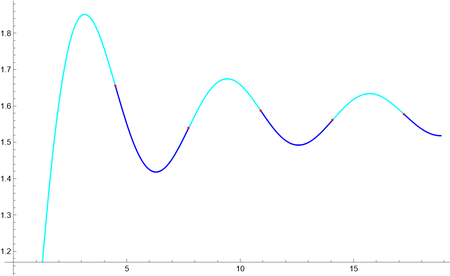FindRoot[
{Derivative[2][SinIntegral[x]], 0 < x < (Pi)},
x
]
I hoped that my code would return a value for x=0 but it is returning an error: "search specification should be a list with 1 to 5 elements"
edit: I want to iterate this multiple times so it will be helpful to be able to find the root within a given range for x



Plot[SinIntegral''[x], {x, 0, 6 \[Pi]}]and then choose a suitable initial guess:FindRoot[SinIntegral''[x], {x, 5}]$\endgroup$0 <= x <= 6 Piusesol = FindRoot[SinIntegral''[x], {x, #}] & /@ {1/20, 5, 8, 11, 14, 17}$\endgroup$